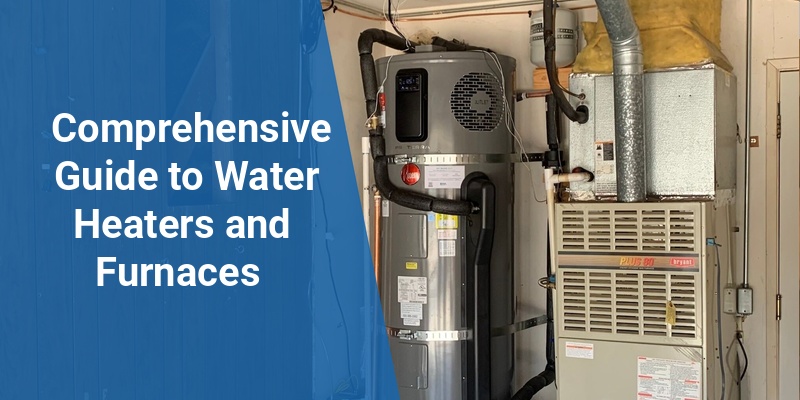Water heaters and furnaces are essential components of residential heating systems in the United States, providing comfort and hot water year-round. This guide covers the types, operation, maintenance, and efficiency considerations for both devices, helping homeowners make informed decisions and ensure reliable performance.
| Component | Primary Function | Common Fuel Types | Typical Lifespan |
|---|---|---|---|
| Water Heater | Provides hot water for domestic use | Electricity, Natural Gas, Propane | 8-12 years |
| Furnace | Heats indoor air for home heating | Natural Gas, Propane, Electricity, Oil | 15-20 years |
Types of Water Heaters Available
Water heaters are designed to meet varying household needs. The most common types used in American homes include:
- Storage Tank Water Heaters: These units store and heat a set volume of water, typically between 30 to 80 gallons, using electric or gas-powered heating elements.
- Tankless (On-Demand) Water Heaters: These systems heat water only when it is needed, resulting in energy savings by eliminating standby heat loss.
- Heat Pump Water Heaters: These extract heat from the surrounding air and transfer it to water, making them highly efficient in moderate climates.
- Solar Water Heaters: Utilizing solar panels, these systems harness renewable energy to heat water, reducing dependence on conventional fuels.
Types of Furnaces Used in American Homes
Furnaces serve as the main source of home heating in many regions. Understanding their types helps with proper selection and maintenance:
- Gas Furnaces: The most prevalent in the US, they burn natural gas or propane to heat air, offering efficient heating and relatively low operating costs.
- Electric Furnaces: These use electric resistance coils to generate heat, generally more expensive to operate but useful where gas is unavailable.
- Oil Furnaces: Less common today, they burn heating oil and require a storage tank; often used in colder regions without natural gas access.
- Coal Furnaces: Rare in modern applications but historically important for heating in certain areas.
How Water Heaters and Furnaces Work
Water Heater Operation
Water heaters typically function by heating water to a preset temperature using a thermostat. In storage tank models, cold water enters the tank and is heated by gas burners or electric elements. Tankless heaters pass water through a heat exchanger that instantly raises its temperature as it flows through the system. Modern units often have safety valves and insulation to enhance performance and safety.
Furnace Operation
Furnaces heat indoor air by drawing in cold air through return ducts, warming it with a heat exchanger fueled by gas, oil, or electricity, and distributing the heated air via blower fans through ductwork. Advanced models incorporate variable-speed blowers and modulating burners for efficient temperature control and energy savings. Safety features like flame sensors and limit switches prevent hazards during operation.
Energy Efficiency and Cost Considerations
Efficiency ratings are critical in selecting water heaters and furnaces, impacting both energy costs and environmental footprint.
| Appliance Type | Efficiency Rating | Typical Energy Savings Feature |
|---|---|---|
| Water Heater | Energy Factor (EF) or Uniform Energy Factor (UEF) | Insulation, Tankless Design, Heat Pump Technology |
| Furnace | Annual Fuel Utilization Efficiency (AFUE) | Variable-Speed Fans, Modulating Burners, Sealed Combustion |
High-efficiency gas furnaces can achieve AFUE ratings of 90% or higher, significantly reducing natural gas consumption. Tankless water heaters and heat pump models offer substantial energy savings compared to traditional units but often come with higher upfront costs.
Call 888-906-9139 for Free Local HVAC Quotes – No Obligation, Just Savings!
Installation and Maintenance Best Practices
Proper installation and regular maintenance extend the lifespan and maximize the efficiency of both water heaters and furnaces.
- Water Heaters: Ensure proper venting, correct sizing based on household needs, and annual flushing to remove sediment buildup.
- Furnaces: Conduct annual inspections of burners, heat exchangers, and filters. Replace air filters regularly and check ductwork for leaks.
Professional installation is recommended for compliance with local building codes and safety standards to avoid risks such as gas leaks or carbon monoxide exposure.
Common Issues and Troubleshooting
Some frequent problems encountered with water heaters and furnaces include:
- Water Heater: Inadequate hot water, leaking tanks, noisy operation caused by sediment buildup.
- Furnace: Failure to ignite, uneven heating, and frequent cycling on and off.
Regular inspections and addressing issues promptly prevent costly repairs and improve system reliability. Homeowners should also install carbon monoxide detectors near gas-powered appliances for safety.
Choosing the Right System for Your Home
Factors influencing the choice of water heaters and furnaces include:
- Household size and hot water demand
- Local climate and heating requirements
- Fuel availability and utility costs
- Space constraints and installation feasibility
- Budget considerations and long-term energy savings
Consulting with HVAC professionals helps optimize selections based on these parameters, ensuring comfort and cost-efficiency.
